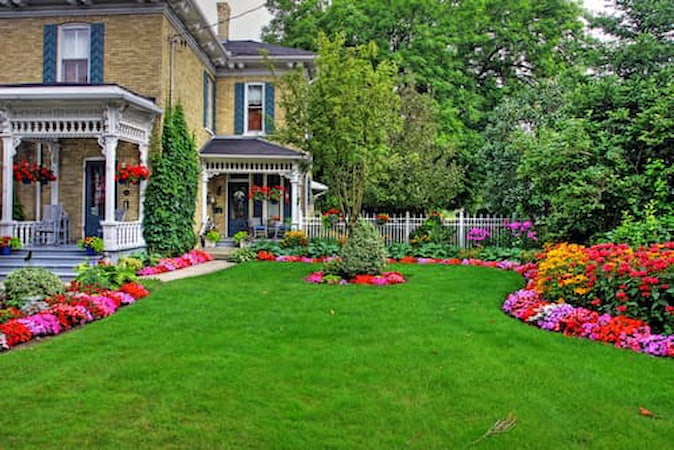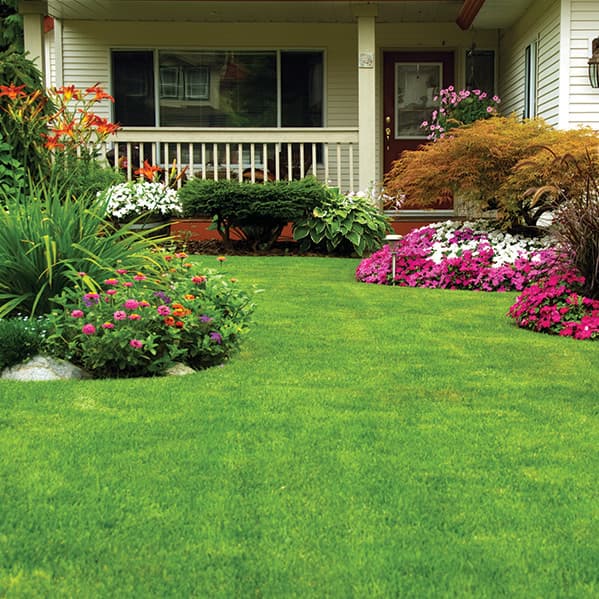Botanically Speaking
What to plant? When to plant? What turf grows best in our region? There are endless landscaping design options available with numerous factors to consider beyond appearance. Sustainability, proper care, irrigation, and plant nourishment are all part of Affinity Landscaping's landscaping installation, landscaping maintenance, and lawn care services, and we're happy to manage every aspect of your property's outdoor botanical care.
Affinity Landscaping is the local authority on regional botanical health and care and we're happy to share the following guidance, botanically speaking.
Irrigation
Check your sprinkler system for problems such as broken or misaligned spray heads regularly. Check pumps and backflows for leaks and hairline cracks; check your coverage and make sure water is landing on the green areas, and not the inorganic hardscapes; water deeper but less frequently; water during daylight hours.

Ornamental Shrubs And Bushes
Prune when the dormant season ends and new growth begins. Cut shrubs back before the rainy season to keep the new growth from getting out of hand.
Ornamental Grasses
Prune ornamental grasses back after the last freeze threat of the season. Cut back as far as you wish above the collar. Pruning is important to allow for new growth.
Fertilize Palms, Ornamental Trees, and Shrubs
Fertilize palms with tree spikes formulated especially for palm requirements, such as fertilizers supplemented with manganese and magnesium. Use an acid-forming fertilizer for azaleas, camellias, and certain other ornamental shrubs if needed. Choose a fertilizer in which at least 30% of its nitrogen is slow-release, is a good source of Iron, and is over 50% slow-release, and urea or sulfur coated fertilizer with a 1:1:1 ratio. Ask about taking soil samples for pH and nutrient requirements in your bedding areas.

Annuals And Bedding Plants
Dianthus, petunias, snapdragons, and a few other late-season winter and early spring annuals flourish early. Start planning on planting warm-season annuals such as angelonia, wax begonia, vinca, penta, zinnia, and others at the end of March and into April. Remember annual bedding areas need a good soil conditioner, organic fertilizers, and mulching.
Bulbs
Plant dahlia, canna, caladium, and gloriosa bulbs for spring and summer flowering. Provide stakes as needed to support growth.
Herbs
Plant annual herbs like mint, oregano, basil, rosemary shrubs, sage, tarragon, chives, garlic a month before the last frost. Consider growing edible ginger, turmeric, or aloe for their medicinal values.
Vegetables
Begin planting warm-season crops, such as beans, tomatoes, squash, and corn, in the late first quarter and early second quarter of the year for late spring harvest. Protect from frost.
Azaleas And Camellias
Prune azaleas and camellias when they have finished blooming to reduce their size and improve their form.
Don't put off that big landscaping job. Investment in aesthetics and upgrades to your outdoor spaces adds value to your home. Affinity Landscaping can transform your outdoor spaces into beautiful, functional works of botanical art, without breaking the bank.
Lawn Care Articles & Tips
-
How Professional Sprinkler Repair Saves Water (and Money) in the Columbia Heat
When summer hits Columbia, SC, lawns drink fast. If your system is wasting water, your grass struggles and your bill climbs. Professional sprinkler repair in Columbia, SC targets the real problems th […]
-
Professional Lawn Maintenance Tips for a Healthier Yard
A healthy lawn doesn't happen by chance. It requires consistent care, an understanding of seasonal changes, and a commitment to proper techniques that keep grass vibrant year-round. Professional lawn […]
